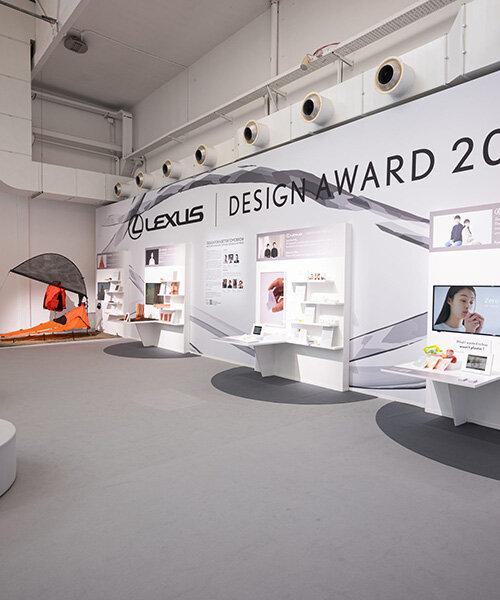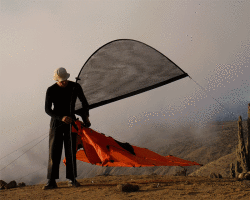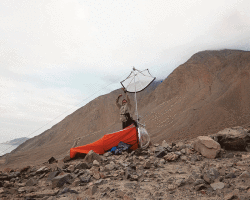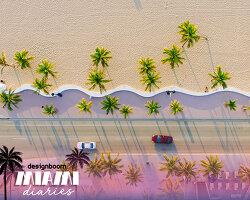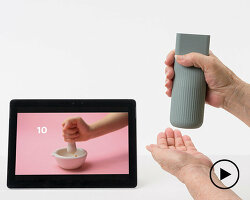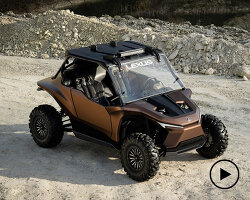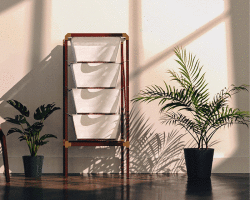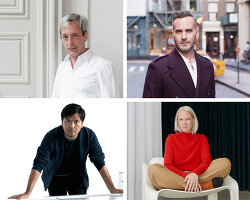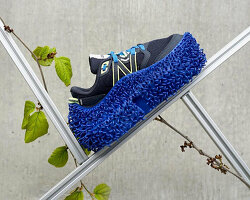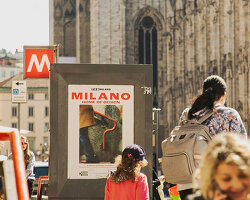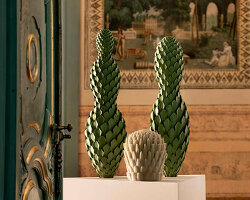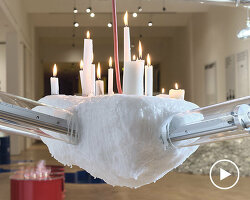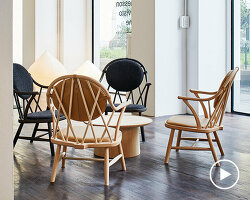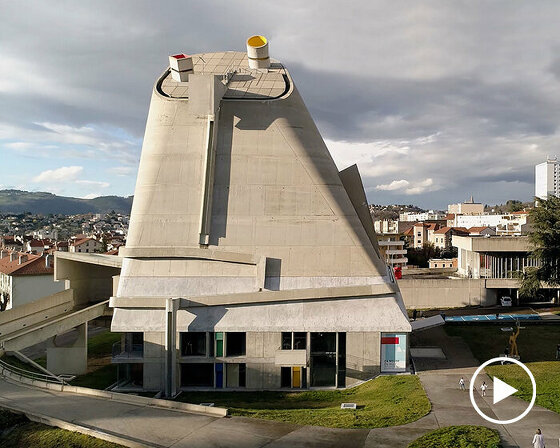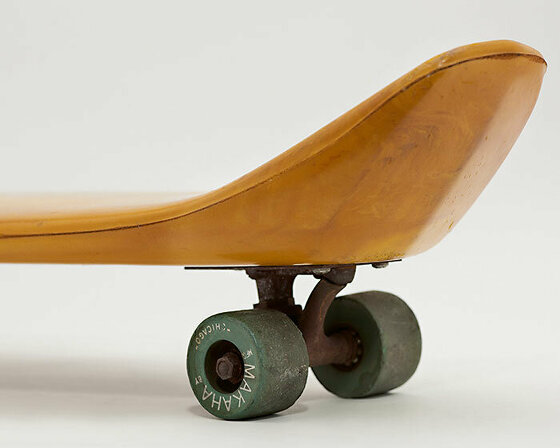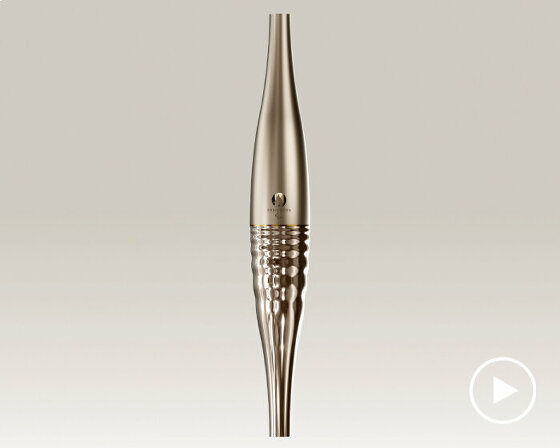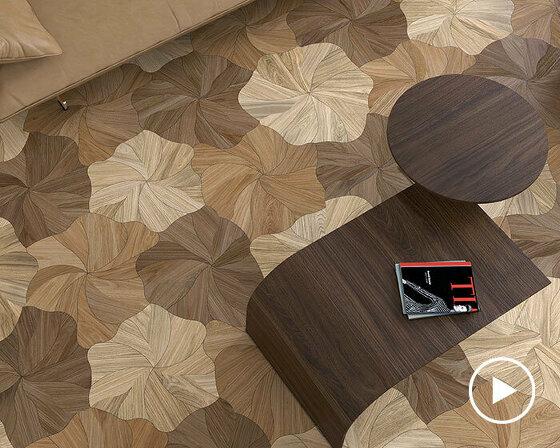Since 2013, Lexus has empowered the next generation of creators to Design for a Better Tomorrow through the LEXUS DESIGN AWARD. The work of the four winners of the 2023 edition ideates creative solutions to some of the world’s most pressing issues, from dissolvable food and clothing packaging to a jacket that turns fog into drinking water. With the help of the award and its highly esteemed mentors and judges, though, the projects look to shape the future following a public showcase coinciding with Milan Design Week 2023.
designboom spoke with the LEXUS DESIGN AWARD 2023 winners in Milan as their projects move from concept to reality.
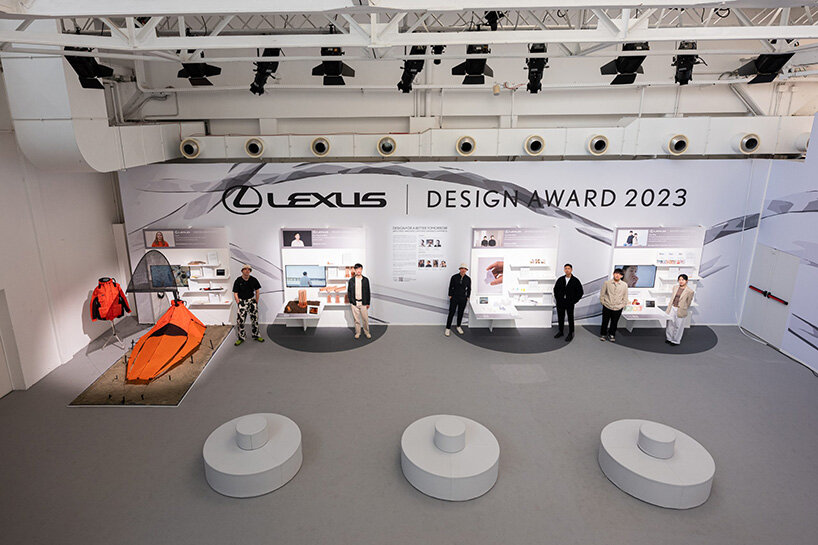
The four LEXUS DESIGN AWARD 2023 winners showcased the projects during Milan Design Week
2068 entries to 4 winners
2,068 entries from 63 countries and regions around the world were assessed down to four concepts that best represented the theme of Design for a Better Tomorrow. The projects were judged by an esteemed panel of judges: Paola Antonelli, Senior Curator, Department of Architecture and Design, MoMA; Karim Rashid, Designer and Founder of Karim Rashid Inc.; and Simon Humphries, Chief Branding Officer, Toyota Motor Corporation.
Ahead of the public showcase during Milan Design Week 2023, the four winners attended a unique mentoring workshop in January 2023 and individual sessions for three months afterwards. The aspiring creators collaborated, shared ideas and were advised on how to finalize prototypes by four professional experts: Marjan van Aubel, Solar Designer at Marjan van Aubel Studio; Joe Doucet, Designer and Founder of Joe Doucet x Partners; Yuri Suzuki, Artist and Designer/Partner at Pentagram; and Sumayya Vally, Architect/Principal at Counterspace.
‘LEXUS DESIGN AWARD stresses the fact that design is not just about making things, but also and especially about envisioning new processes of making––and sometimes unmaking,‘ begins Paola Antonelli, as the Senior Curator describes the judging process in 2023. ‘Design comes in many forms but this award and this jury appreciate the elegance that comes from considering a systemic approach, which sometimes also means transformation and re-use. The judges tend to privilege projects that have the potential to be impactful, that have the goal to change behaviors, that consider consequences, and that will benefit from the opportunity to be developed further with a mentor.‘
At Lexus’ exhibition in Milan, designboom spoke with the four winners of LEXUS DESIGN AWARD 2023 to delve into their philosophies as creators, their projects, and how the award platform has helped progress their designs from concept to reality.
FOG-X BY PAVELS HEDSTRÖM
Swedish architect Pavels Hedström tackles the social and environmental inequalities of locations through his design work. His award-winning project, Fog-X, aims to bring drinking water to communities and individuals in arid environments.
‘My research started in the Atacama desert in Chile in 2018. I was there to understand the challenges faced by different species in the harshest environments. The inspiration for Fog-X was the Namib Desert beetle and cactus plants, which are able to catch fog and turn it into water,‘ explains Pavels Hedström to designboom.
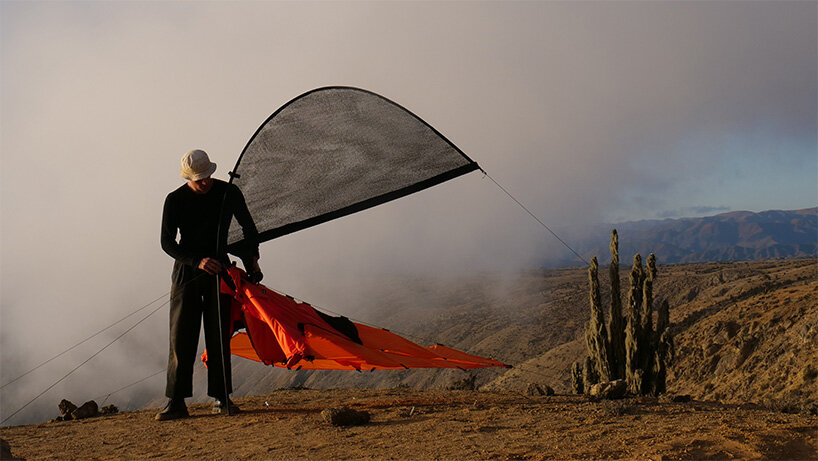
The jacket transforms into a fog-catcher to collect 10 liters of drinking water
‘I wanted to empower the same fog-capturing technique as the beetle and cactus plants, initially into a backpack. However, this became too heavy. Through further development and mentoring, I decided to make the idea function as if a second skin, like a jacket,‘ continues the architect.
Originally designed as a backpack that could be carried through arid environments and placed in the most optimal locations, Fog-X has been designed as a lightweight, compact jacket that transforms into a fog-catching shelter. The design evolved through the development process and mentoring system during the LEXUS DESIGN AWARD. Its expanded structure can collect up 10 liters of drinking water a day, providing a lifeline for communities in harsh environments around the world, like the Atacama desert.
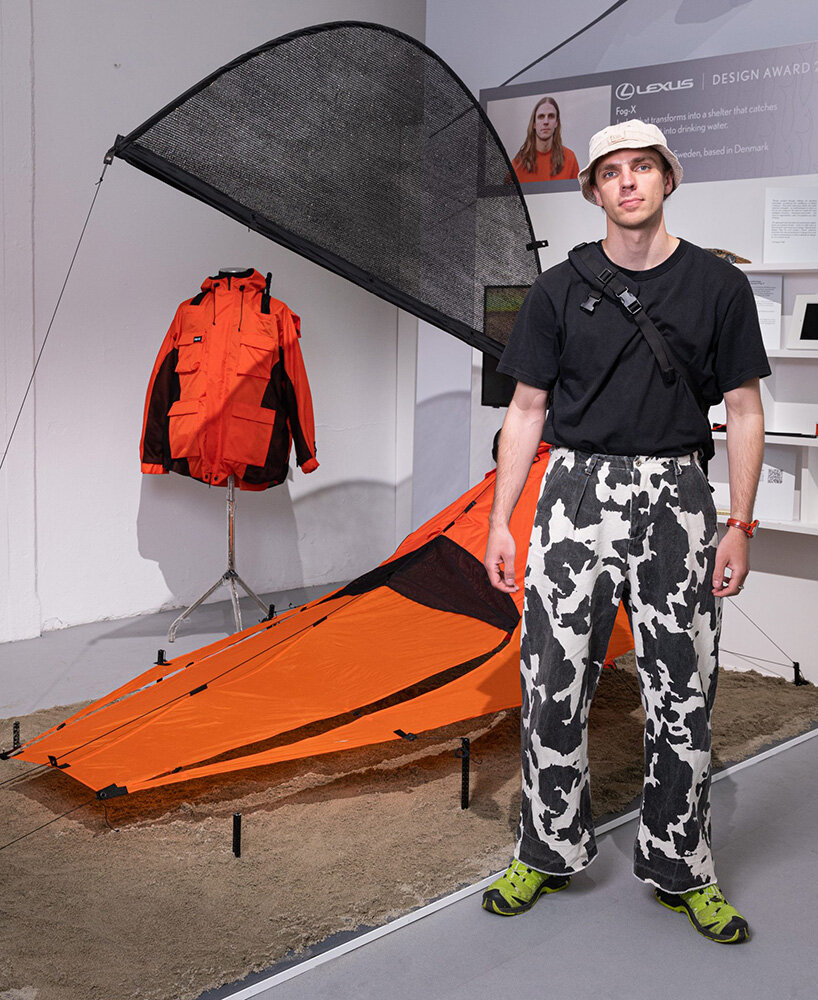
Fog-X by Pavels Hedström won the Your Choice Award which was voted by the public
PRINT CLAY HUMIDIFIER BY JIAMING LIU
‘I set about finding a solution to the social problem of ceramic waste, especially in China. This design recycles the material, grounds it into a powder, and is then 3D-printed into a useful product again,‘ begins Chinese designer Jiaming Liu.
Recognizing this large-scale problem, Jiaming Liu’s Print Clay Humidifier uses advanced manufacturing techniques to recycle ceramic waste that is destined for a landfill. The work not only finds a solution to the waste but also aims to make consumers aware of their own resources and impact on nature.
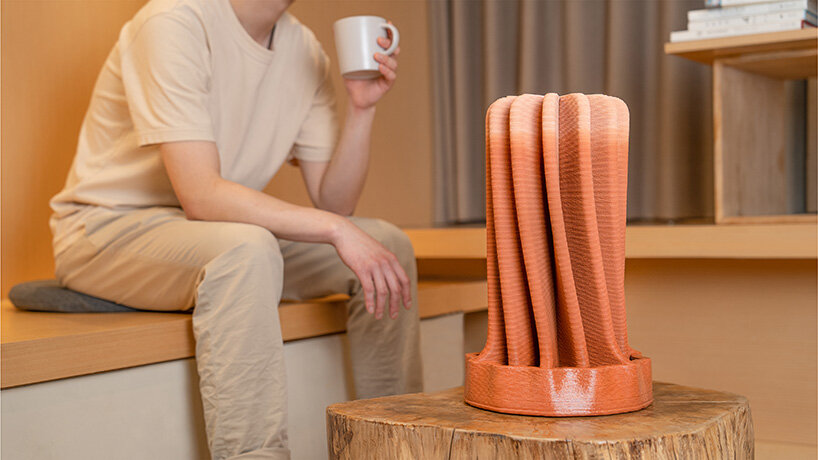
The humidifier takes on a unique, highly functional shape to maximize water retention
‘It took five months to realize the first generation of the design, from inspiration through to its structure. The LEXUS DESIGN AWARD enabled me to better prototype through the use and testing of different materials and larger machines,‘ adds the designer. ‘I needed to find the most effective design. Different composites of materials, size and shape of the structure change water absorption.’
Through experimentation, the designer was able to realize a highly functional humidifier that maximizes its water retention. At the same time, though, the result has a unique, elegant shape made through the 3D printing. Its aesthetic fits into a modern home.
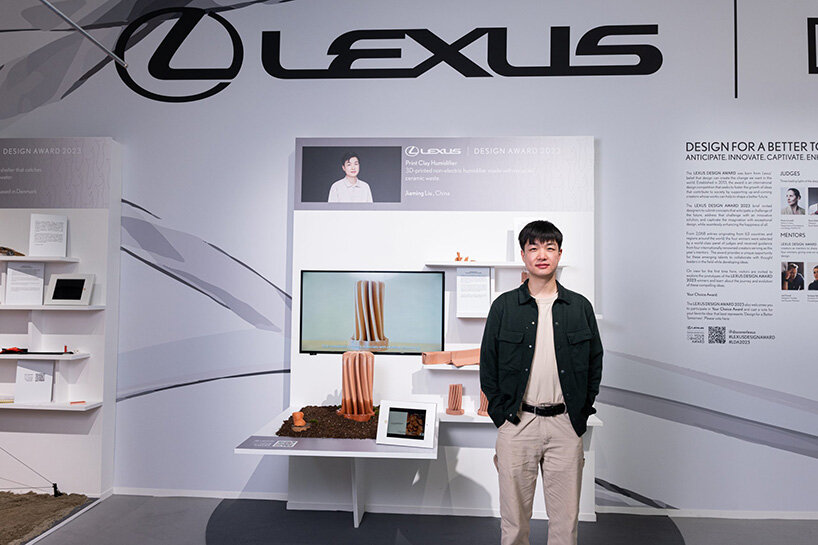
Chinese designer Jiaming Liu’s Print Clay Humidifier recycles ceramic waste that is destined for a landfill
ZERO BAG BY KYEONGHO PARK & YEJIN HEO
Designers Kyeongho Park and Yejin Heo’s Zero Bag was inspired by the typical behavior in the Republic of Korea to wash newly purchased clothes before wearing in order to remove chemicals.
‘Our project started through the observation of our daily lives. When we purchase clothes wrapped in plastic packaging that generates unnecessary waste, and also, we noticed that people wash their clothes before wearing them in Korea. To solve this issue, we created a package that dissolves in water with detergent that can be washed with the clothes,‘ comments Kyeongho Park.
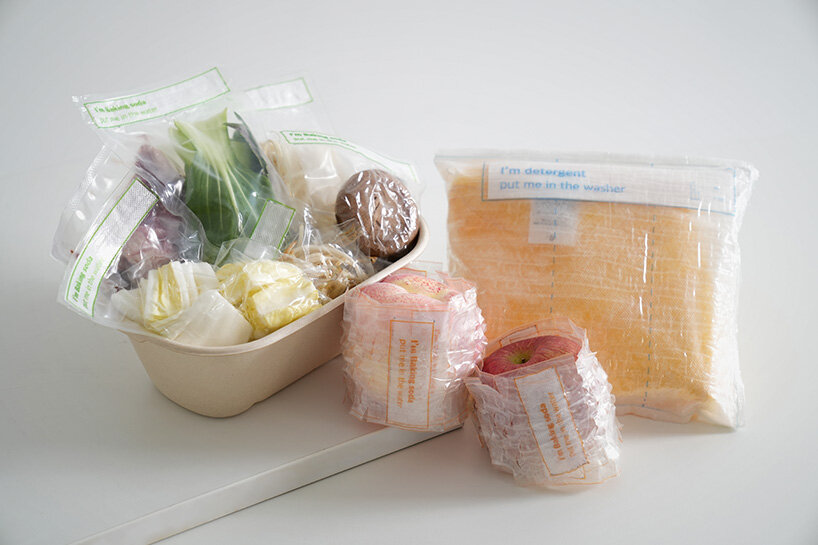
The packaging dissolves in water to reduce plastic waste for clothes and food
‘The mentors during LEXUS DESIGN AWARD challenged us to widen the focus of the design. This is why we expanded the initial idea to food packaging as well. The design uses a special structure that can be split by volume, whether an individual item or a whole laundry-worth of clothes,’ adds Yejin Heo.
The Zero bag’s sustainable design dissolves in water. As new clothes are wrapped in the bag, both the clothes and packaging can be run though a washing machine before wearing the items for the first time. After the mentorship program, the designers extended the idea to also package food like fruits and meal-kits. The result aims to significantly reduce packaging waste in the Republic of Korea and many other countries around the world.
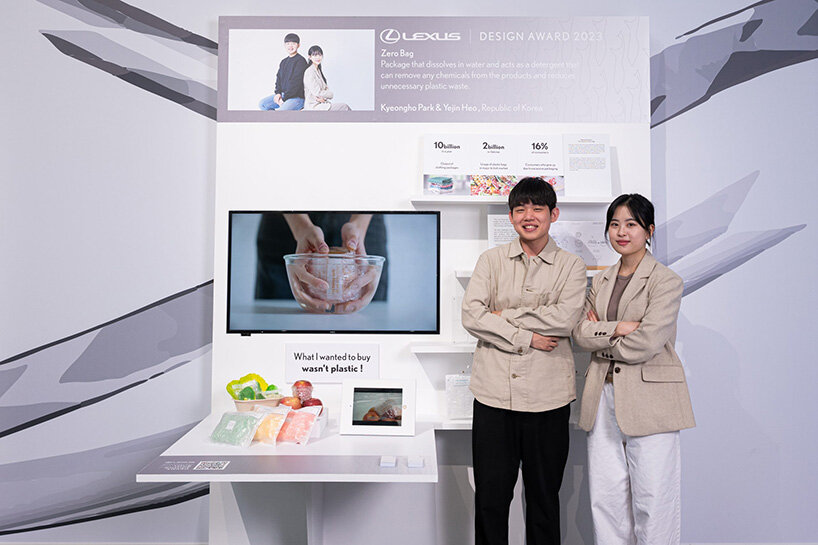
Kyeongho Park (left) and Yejin Heo (right) conceptualized the Zero Bag
TOUCH THE VALLEY BY TEMPORARY OFFICE
‘Every geographical location has a uniqueness to the landscape, such as the contours and striations of the rock formation. We noticed that those with impaired vision would rely on textures to navigate surroundings. The puzzle was incepted to aid these people in becoming sensitized and trusting of an environment based on touch,‘ mentions Vincent Lai of Temporary Office.
Founded by two classmates graduated from the University of California, Berkeley, Temporary Office
is a design duo that believes designers and architects should be adaptive in response to an ever-changing climate in the political and economic fields. Their work playfully yet rationally addresses social issues, such as the familiarity of space for visually impaired in the Touch the Valley puzzle.
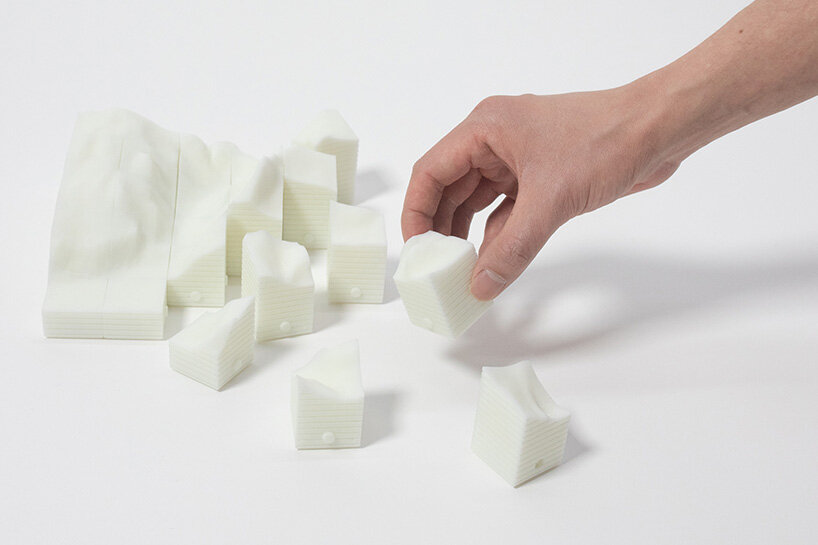
The puzzle aids visually impaired people, through assembly, to navigate their surroundings
It is a 3D topographic puzzle that aids the visually impaired in navigating their surroundings, through its assembly. A rectilinear grid has elevational grooves and 72 graphical contours so the users can feel and align the pieces. Users touch, play, and piece the contoured parts together to increase remembrance of the space surrounding them.
‘After the mentorship, we refined the design even further to make the play more intuitive. The original connections had multiple edges that confused the visually impaired. We were advised to keep it simple. As we progressed along with the project, we dismissed additional features that we initially wanted to add but would not have improved the user experience. Instead, we prioritized our original design intent,‘ confirms Douglas Lee to designboom.
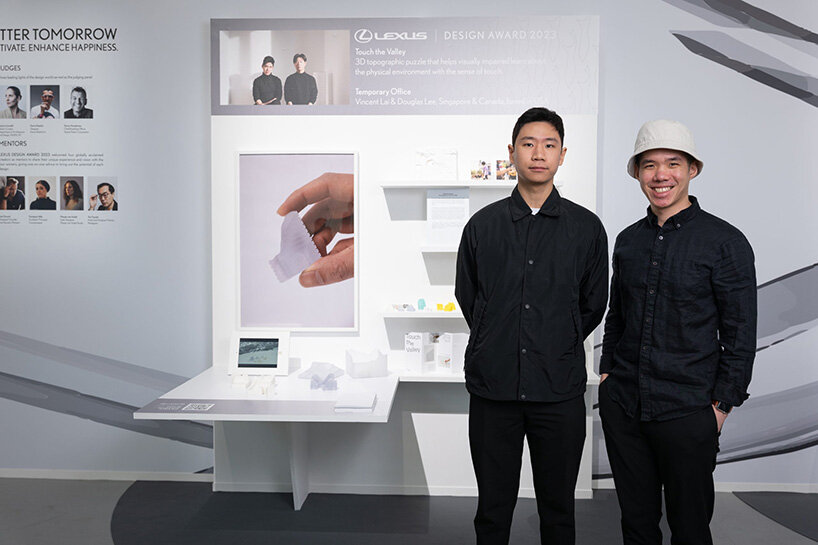
Douglas Lee (left) and Vincent Lai (right) of Temporary Office with Touch the Valley
Reflecting Lexus’ commitment to society, the award offered the next generation of creators a global platform to demonstrate their abilities to address societal issues through design.
exhibition info:
brand: Lexus
competition: LEXUS DESIGN AWARD
judges: Paola Antonelli, Karim Rashid, and Simon Humphries
mentors: Marjan van Aubel, Joe Doucet, Yuri Suzuki, and Sumayya Vally
winners: Pavels Hedström, Temporary Office, Jiaming Liu, and Kyeongho Park & Yejin Heo
location: Superstudio Più
address: Via Tortona 27, Milan
LEXUS (61)
LEXUS DESIGN AWARD (44)
MILAN DESIGN WEEK 2023 (74)
PRODUCT LIBRARY
a diverse digital database that acts as a valuable guide in gaining insight and information about a product directly from the manufacturer, and serves as a rich reference point in developing a project or scheme.
